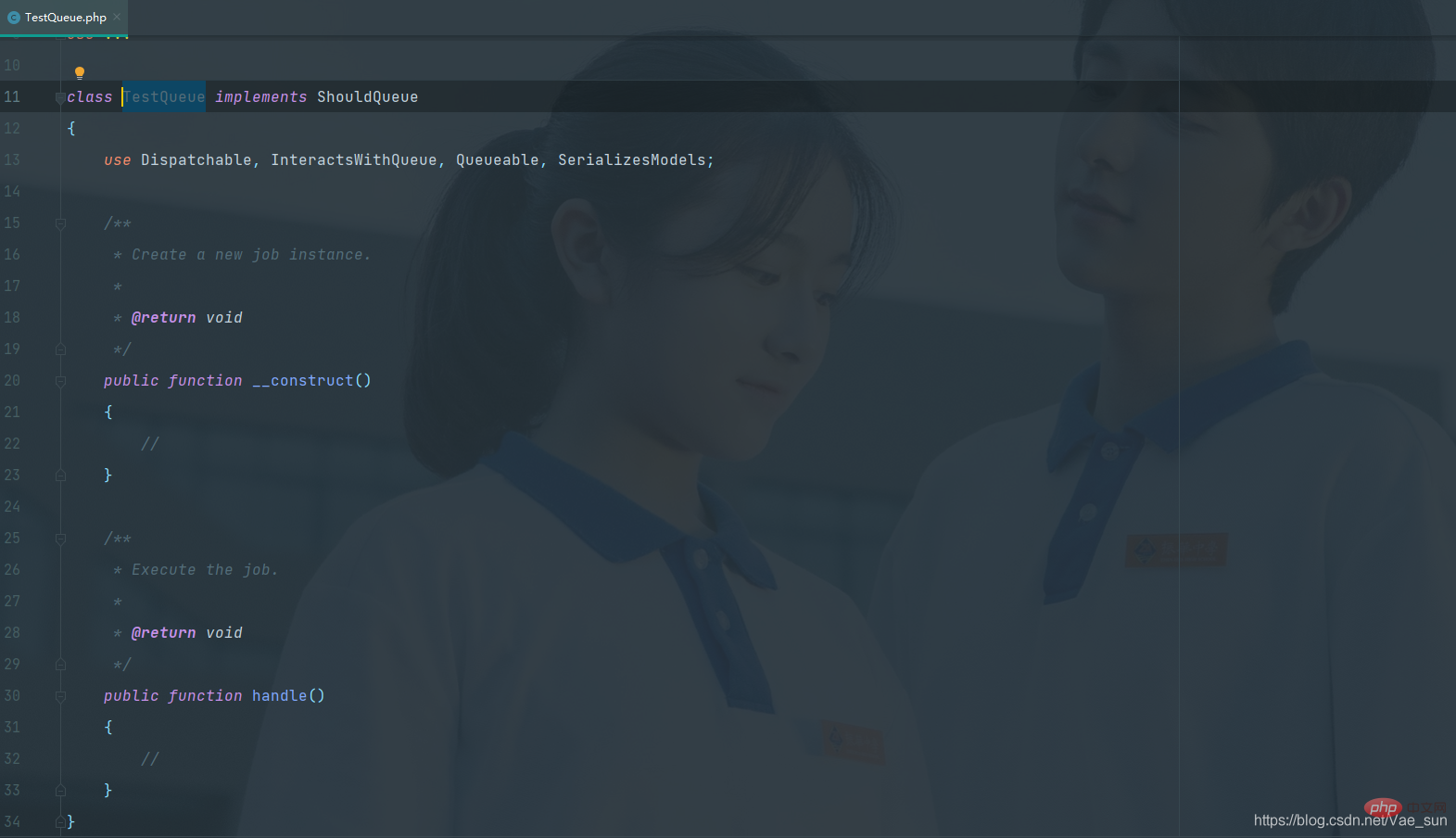Home >PHP Framework >Laravel >An in-depth explanation of queues and task scheduling in laravel6
In laravel, we only need to operate the queue to implement it. Implementation, on the premise of implementation, we need to perform simple configuration and modify config/queue.php. Please check the official documentation for details. I will not explain in detail here. Let’s go directly to the topic.
First, by executing php artisan make:job task class name we can implement a queue task. After executing this command, Jobs will be generated in the app directory directory and create a new task class. This task class will automatically inherit the Illuminate\Contracts\Queue\ShouldQueue interface. Our queue will call the handle method of the task class, so we only need to go inside the handle. By implementing our specific business logic, we can easily implement the task class. At this time, we are processing our task class, so how should we allocate tasks for processing? 
In laravel, task distribution only needs to be done through simple implemented methods. We only need to specify the corresponding queue for the task. Distribution processing, the specific implementation method only requires the following simple lines of code to achieve task distribution.
//任务指定到对应的队列 $job = (new TestQueue())->onQueue('队列名称'); //分发任务 dispatch($job);
After the queue is distributed, we run the php artisan queue:workqueue processor, which will process the tasks distributed to the queue. process, it will run until it is manually stopped or the terminal is closed. It should be noted that since the queue processor is a resident process and saves the started application state in the memory, when we modify the corresponding code, we need to restart the queue processor to load the modified code logic. . So when we modify the corresponding task class, we need to restart to ensure correctness.
Supervisor configuration, the official document here explains it very clearly, there is no need for me to repeat the official document portal
Here I directly quote the words of the official document, which is concise and easy to understand.
In the past, you might need to create a Cron entry for each scheduled task on the server. But this approach quickly becomes unfriendly because these task schedulers are not in the source code, and you need to log into the server through an SSH link every time to add a Cron entry.
The Laravel command line scheduler allows you to clearly and smoothly define command scheduling in Laravel. And when using this task scheduler, you only need to create a single Cron entry on your server. Your task schedule is defined in the schedule method of app/Console/Kernel.php.
Task scheduling definition. In the official laravel documentation, we more commonly use task Artisan command scheduling and queue scheduling.
//artisan命令调度 $schedule->command('emails:send Taylor --force')->daily(); //队列调度 $schedule->job(new Heartbeat)->everyFiveMinutes(); // 分发任务到「heartbeats」队列... $schedule->job(new Heartbeat, 'heartbeats')->everyFiveMinutes();
The frequency of task calls, such as daily(), everyFiveMinutes(), etc. in the above steps, all limit the frequency of task calls. , it is not difficult to understand in a literal sense. In fact, it is set to be called once every minute or every day. The specific call is as follows (to sum up the length), you can also check the official documentation for details.
| Method | Description |
|---|---|
| Customized Cron scheduled execution task | |
| Execute the task once every minute | |
| Perform a task every five minutes | |
| Perform a task every ten minutes | |
| Perform a task every fifteen minutes | |
| Execute a task every thirty minutes | |
| Perform the task every hour | |
| Perform the task once every hour at the 17th minute | |
| Execute a task at midnight every day (Translator's Note: zero o'clock every day) | |
| Execute the task once every day at 13:00 | |
| Execute the task at 1:00 and 13:00 every day One task | |
| Perform a task once a week | |
| Execute the task every Monday at 8 o'clock | |
| Execute every month One task | |
| Execute the task once every month at 15:00 on the 4th | |
| Perform the task once every quarter | |
| Every year Execute a task | |
| Set the time zone |
The latest five Laravel video tutorials
The above is the detailed content of An in-depth explanation of queues and task scheduling in laravel6. For more information, please follow other related articles on the PHP Chinese website!